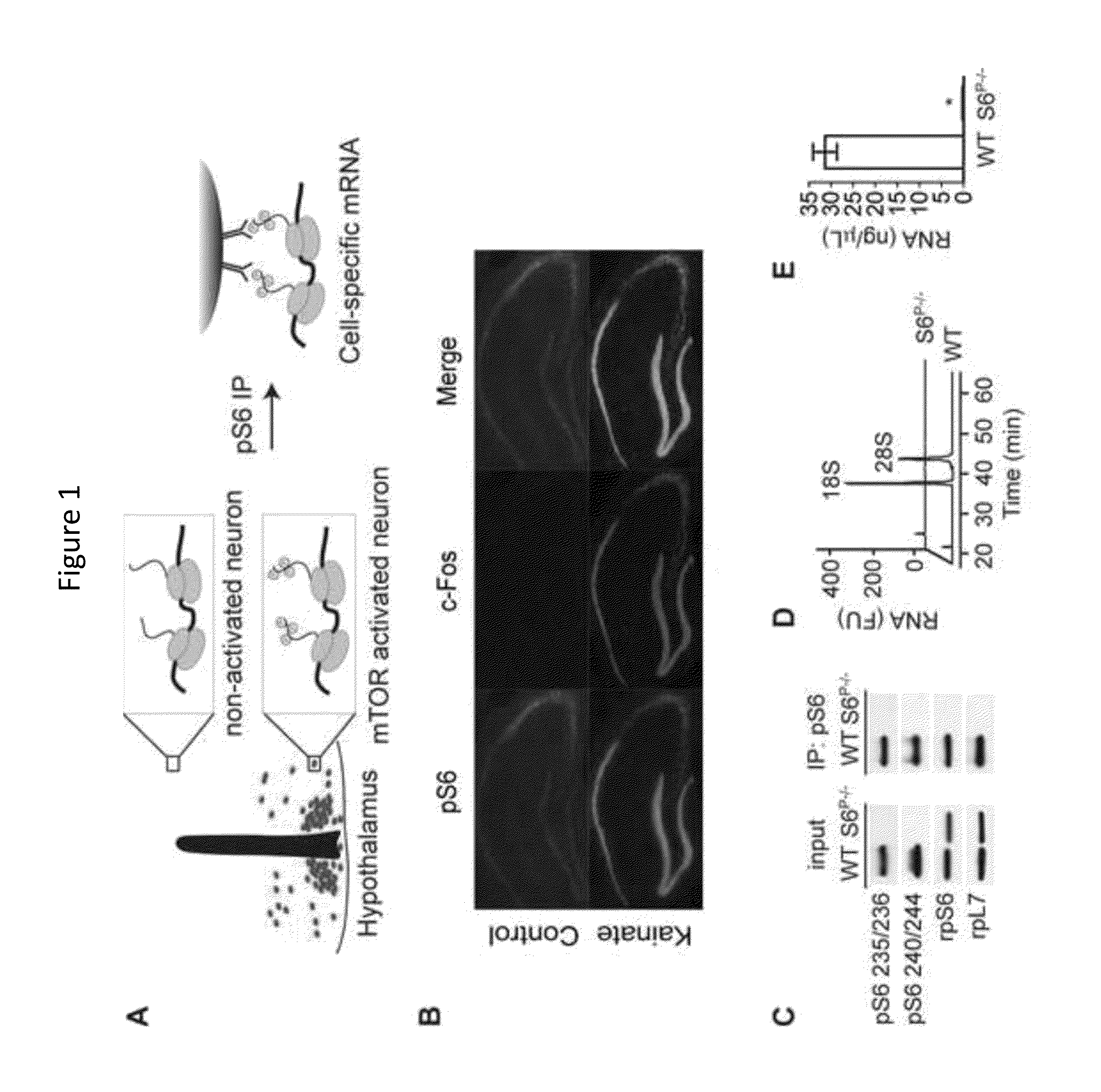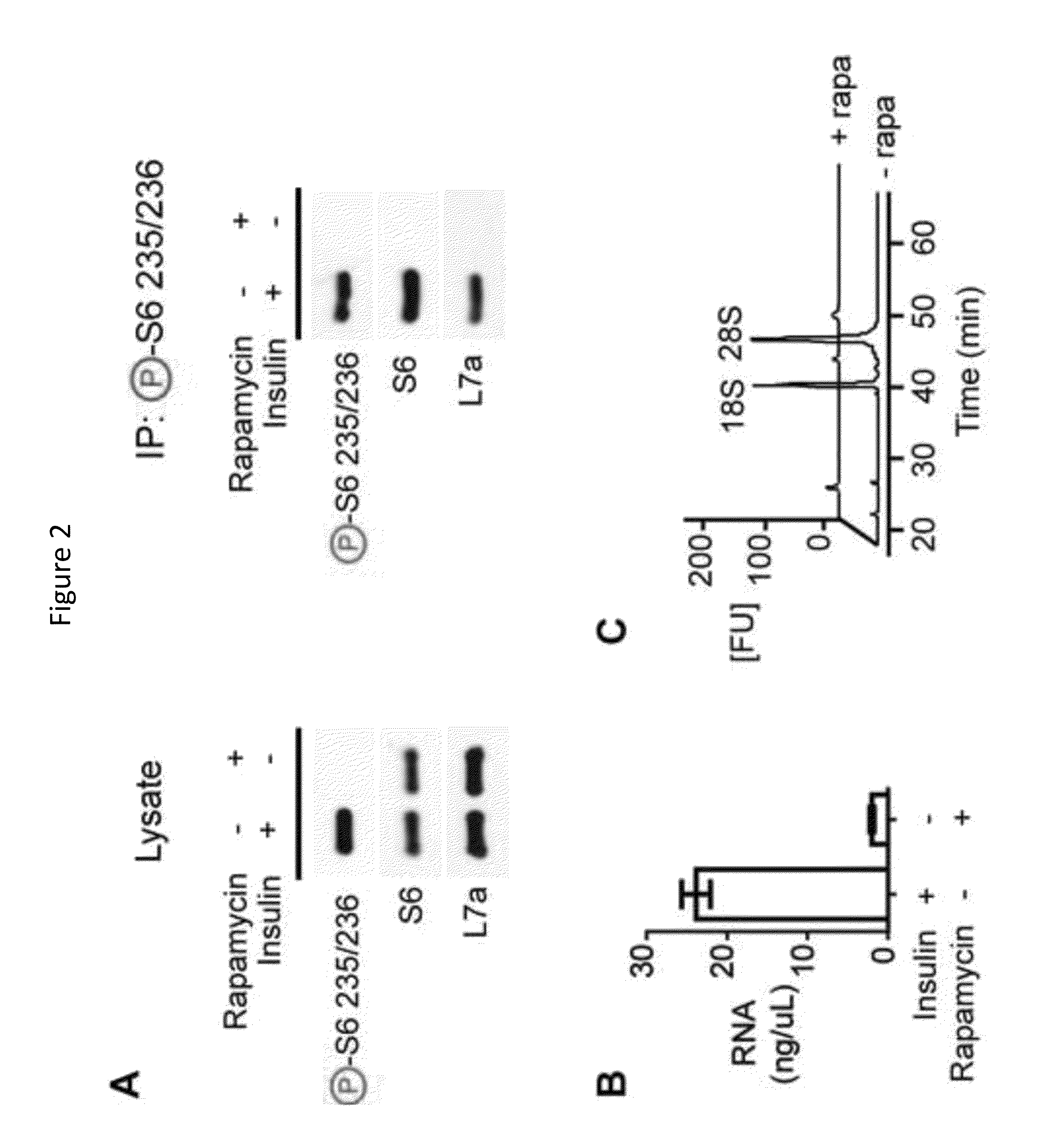Methods and Compositions for Activity Dependent Transcriptome Profiling
a transcriptome and activity-dependent technology, applied in the field of activity-dependent transcriptome profiling, can solve the problems of limited gene expression studies on isolated cells, and achieve the effect of reducing the binding affinity
- Summary
- Abstract
- Description
- Claims
- Application Information
AI Technical Summary
Benefits of technology
Problems solved by technology
Method used
Image
Examples
experimental examples
[0117]The invention is further described in detail by reference to the following experimental examples. These examples are provided for purposes of illustration only, and are not intended to be limiting unless otherwise specified. Thus, the invention should in no way be construed as being limited to the following examples, but rather, should be construed to encompass any and all variations which become evident as a result of the teaching provided herein.
[0118]Without further description, it is believed that one of ordinary skill in the art can, using the preceding description and the following illustrative examples, make and utilize the compounds of the present invention and practice the claimed methods. The following working examples therefore, specifically point out the preferred embodiments of the present invention, and are not to be construed as limiting in any way the remainder of the disclosure.
example 1
An Anatomical Map of mTOR Signaling Revealed by Phospho-S6 Capture
[0119]The protein kinase mTOR can be a cellular nutrient sensor that can also regulate complex physiology such as aging, energy homeostasis, and diverse functions of the brain. The specificity of mTOR signaling in these contexts can be encoded by the identity of the cells in which the pathway is activated. The results presented herein show that ribosomes containing phosphorylated S6, a marker of mTOR activity, can be immunoprecipitated from homogenates of complex tissues, such as the brain, thereby enriching for the mRNAs selectively translated in cells with active mTOR signaling. This approach was used to identify neurons that activate mTOR in response to light, fasting, leptin deficiency, and osmotic stimulation. It was observed that reticulocytes harbor high levels of pS6, which was traced to iron regulated mTOR signaling during erythrocyte development. As mTOR signaling in the brain can correlate with neuronal act...
example 2
Molecular Profiling of Activated Neurons by Phosphorylated Ribosome Capture
[0191]The mammalian brain is composed of thousands of interacting neural cell-types. Systematic approaches to establish the molecular identity of functional populations of neurons would advance the understanding of neural mechanisms controlling behavior. The results presented herein show that ribosomal protein S6, a structural component of the ribosome, can become phosphorylated in neurons activated by a wide-range of stimuli. The results show that these phosphorylated ribosomes can be captured from mouse brain homogenates, thereby enriching directly for the mRNAs expressed in discrete subpopulations of activated cells. This approach was used to identify neurons in the hypothalamus that can be regulated by changes in salt balance or food availability. It was observed that galanin neurons can be activated by fasting and that prodynorphin neurons can restrain food intake during scheduled feeding. These studies ...
PUM
| Property | Measurement | Unit |
|---|---|---|
| time | aaaaa | aaaaa |
| temperature | aaaaa | aaaaa |
| concentration | aaaaa | aaaaa |
Abstract
Description
Claims
Application Information
 Login to View More
Login to View More - R&D
- Intellectual Property
- Life Sciences
- Materials
- Tech Scout
- Unparalleled Data Quality
- Higher Quality Content
- 60% Fewer Hallucinations
Browse by: Latest US Patents, China's latest patents, Technical Efficacy Thesaurus, Application Domain, Technology Topic, Popular Technical Reports.
© 2025 PatSnap. All rights reserved.Legal|Privacy policy|Modern Slavery Act Transparency Statement|Sitemap|About US| Contact US: help@patsnap.com



